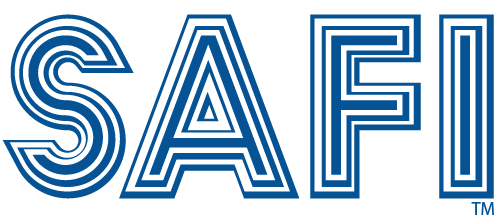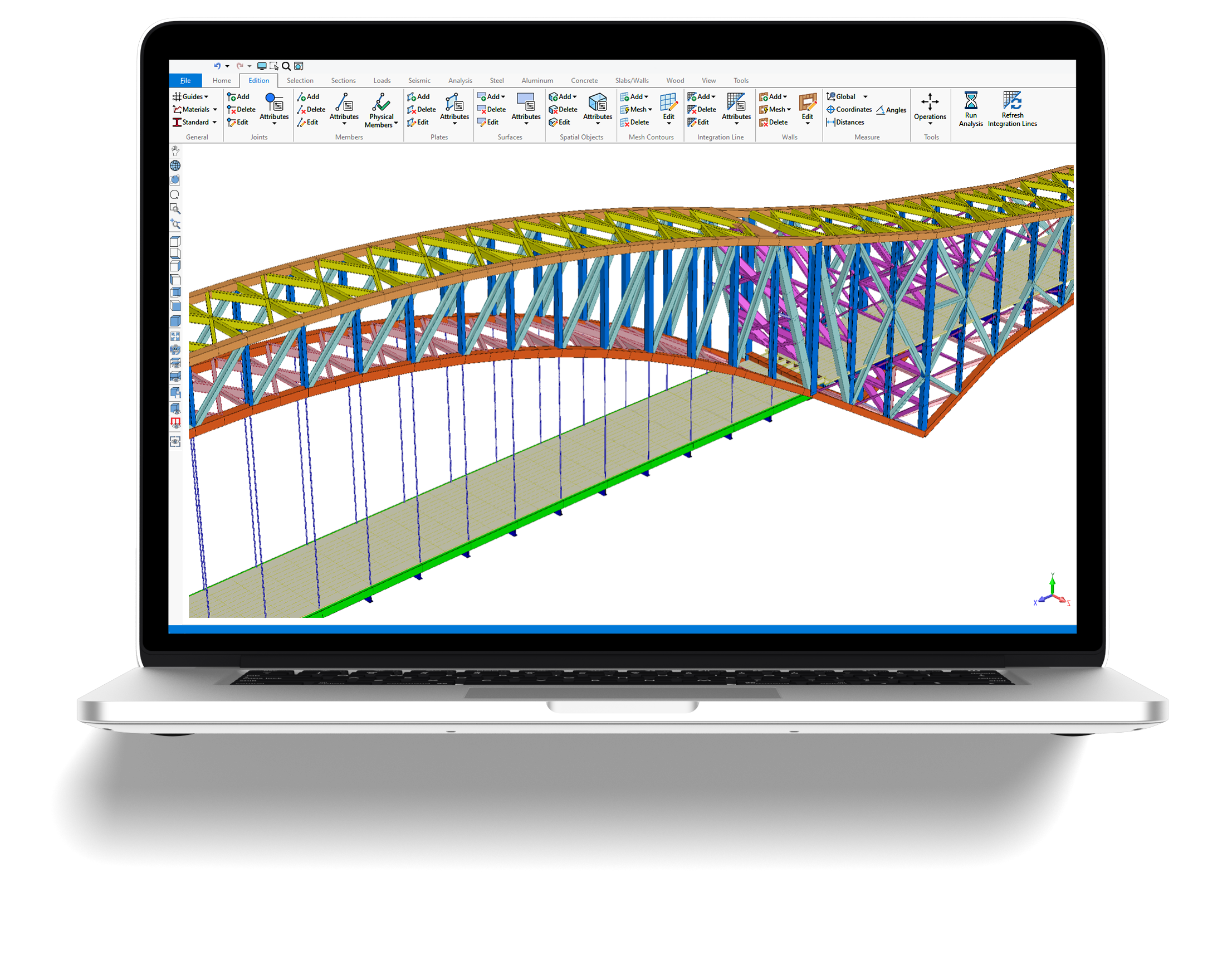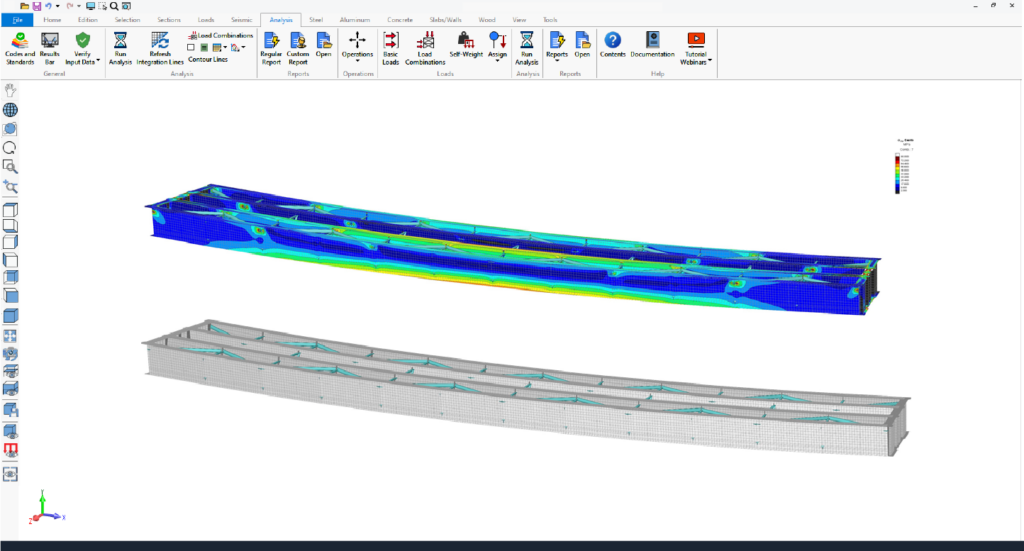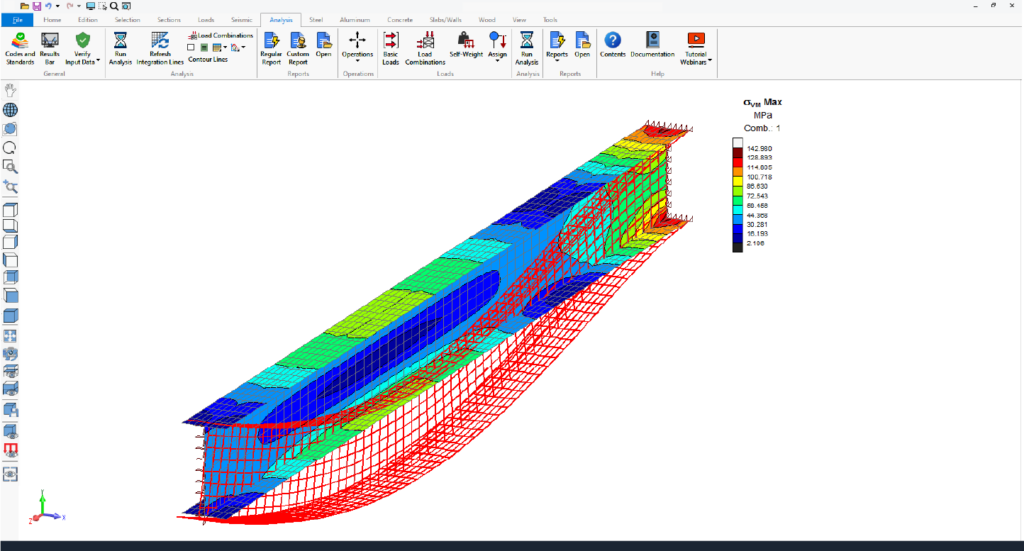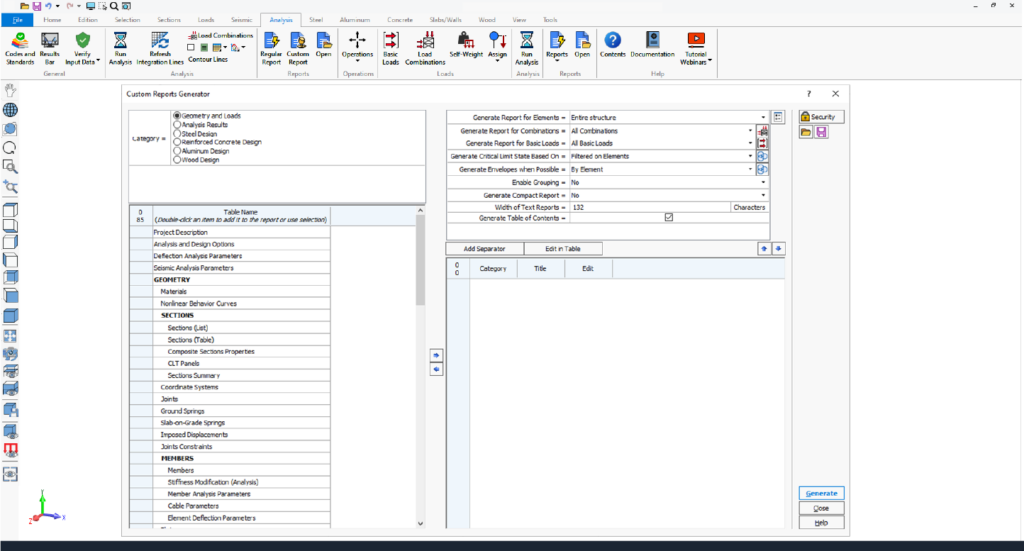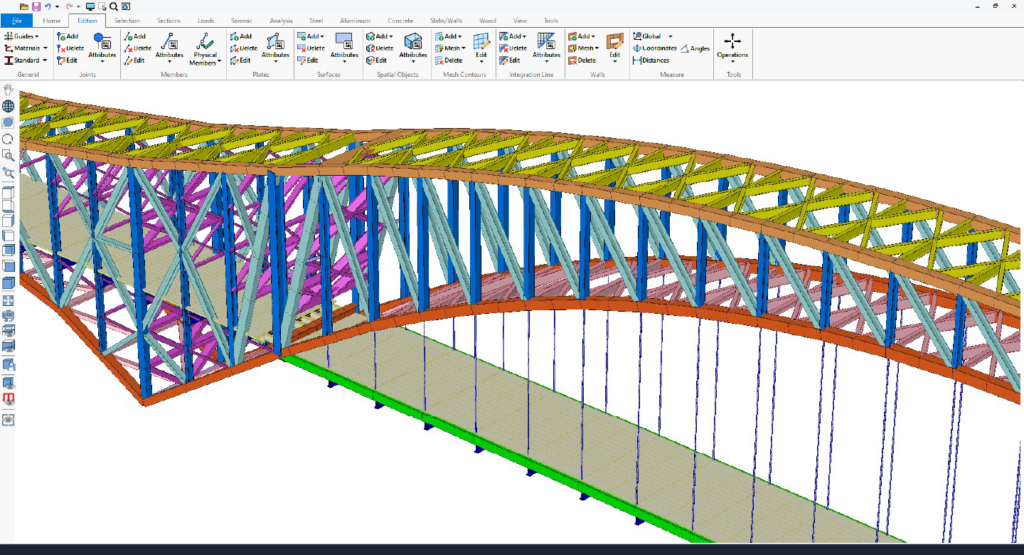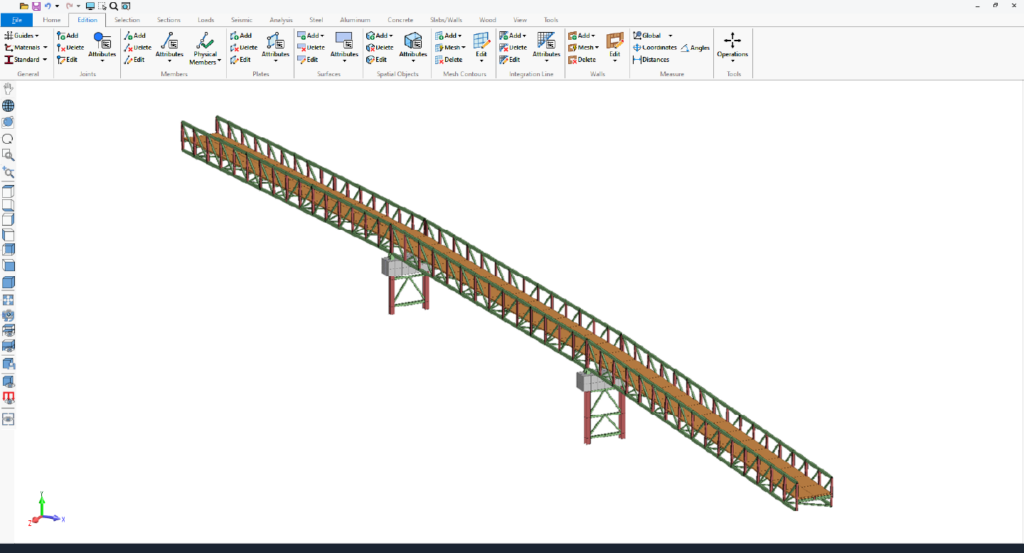Determine load factors automatically based on Chapter 14 of the CSA S6 code.
Compute resistance factors (U) automatically as per Chapter 14 of the CSA S6 code.
Accommodate standard traffic loads and special permit loads.
Define dead load classes for each basic load (D1, D2, and D3).
Assign moving load classes to each basic load, including Normal traffic, alternate normal traffic, PA, PB, PC, and PS.
Specify system behavior, inspection level, and reliability index for each bridge element.
Determine element behavior automatically for each component of the bridge.
Provide forces, resistances, limit states, and live load capacity factors for all elements in the model.
Retrieve any bridge analysis result at any point in the structure.
Generate reports for a specific point, a beam, or the entire bridge.
Access results for truck loads, lane loads, combined truck and lane loads, and any load combination.
Query static load results based on a defined set of criteria.
View results with truck position and direction for accurate assessment.
Display forces associated with queried results for better analysis and verification.

